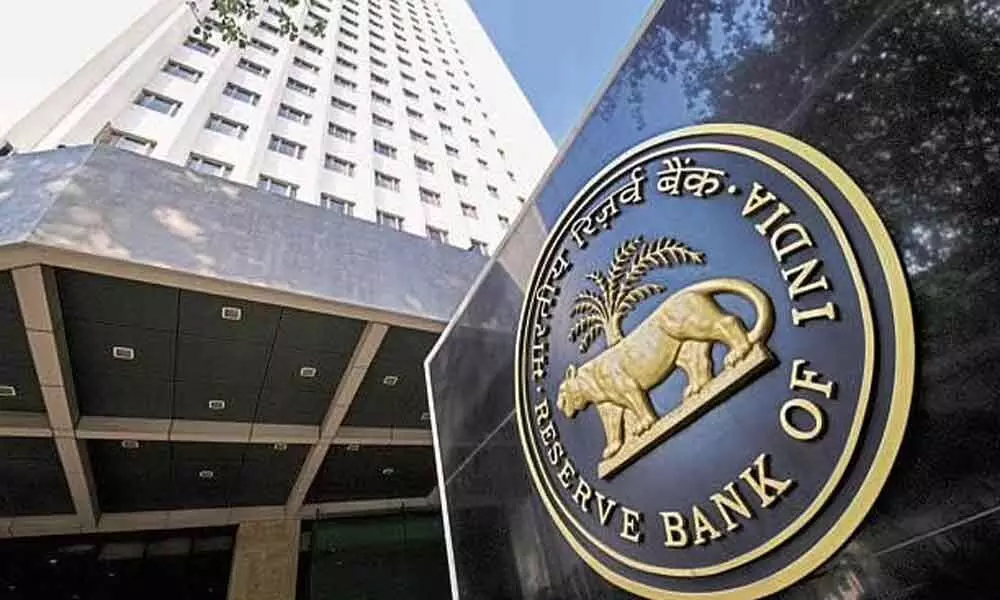Live
- Conduct Tiruchanoor fest akin to Tirumala’s: TTD EO
- Allocate Khelo India funds for sports infra in SVU
- BJP stages protests in various dists over alleged Waqf encroachments
- CM defends BPL ration card cancellation
- Industry should make use of Rs 1-trn ANRF fund: Goyal
- TTD chairman meets Telangana CM
- MITS faculty awarded with PhD by VTU
- Sannapureddy takes charge as RTC regional chairman
- Improve state of public parks, civic chief instructs officials
- Education Minister doesn’t know Kannada
Just In

Reserve Bank of India
The Capital to risk-weighted assets ratio (CRAR) of Scheduled Commercial Banks (SCBs) improved to 15.8 per cent in September 2020 from 14.7 per cent in March 2020, the Reserve Bank of India (RBI) said in Financial Stability Report
The Capital to risk-weighted assets ratio (CRAR) of Scheduled Commercial Banks (SCBs) improved to 15.8 per cent in September 2020 from 14.7 per cent in March 2020, the Reserve Bank of India (RBI) said in Financial Stability Report (FSR). The report also says the gross non-performing asset (GNPA) ratio of the Indian banks declined to 7.5 per cent from 8.4 per cent, and the provision coverage ratio (PCR) improved to 72.4 per cent from 66.2 per cent over this period.
The Reserve Bank of India (RBI) on Monday, January 11, 2021, released the 22nd issue of the Financial Stability Report (FSR).
The report also says, Macro stress tests incorporating the first advance estimates of gross domestic product (GDP) for 2020-21 released on January 7, 2021, indicate that the GNPA ratio of all SCBs may increase from 7.5 per cent in September 2020 to 13.5 per cent by September 2021. It adds, under the baseline scenario, the ratio may escalate to 14.8 per cent under a severe stress scenario. This highlights the need for proactive building up of adequate capital to withstand possible asset quality deterioration.
The report also said, "In the initial phase of the COVID-19 pandemic, policy actions were geared towards restoring normal functioning and mitigating stress; the focus is now being oriented towards supporting the recovery and preserving the solvency of businesses and households." It added, "Positive news on vaccine development has underpinned optimism on the outlook, though it is marred by the second wave of the virus including more virulent strains."
Policy measures by the regulators and the government have ensured the smooth functioning of domestic markets and financial institutions; managing market volatility amidst rising spillovers has become challenging especially when the movements in certain segments of the financial markets are not in sync with developments in the real sector.
The report says the Bank credit growth has remained subdued, with the moderation being broad-based across bank groups. Performance parameters of banks have improved significantly, aided by regulatory dispensations extended in response to the COVID-19 pandemic.
Network analysis reveals that total bilateral exposures among entities in the financial system increased marginally during the quarter ended September 2020. With the inter-bank market continuing to shrink and with a better capitalisation of banks, the contagion risk to the banking system under various scenarios declined as compared to March 2020.
The financial stability report reflects the collective assessment of the sub-committee of the financial stability and development council (FSDC) on risks to financial stability. It also shows the resilience of the financial system in the context of contemporaneous issues relating to development and regulation of the financial sector. The release of FSR was rescheduled to incorporate the first advance estimates of national income for 2020-21 that were released by the National Statistical Office on January 7, 2021.

© 2024 Hyderabad Media House Limited/The Hans India. All rights reserved. Powered by hocalwire.com







